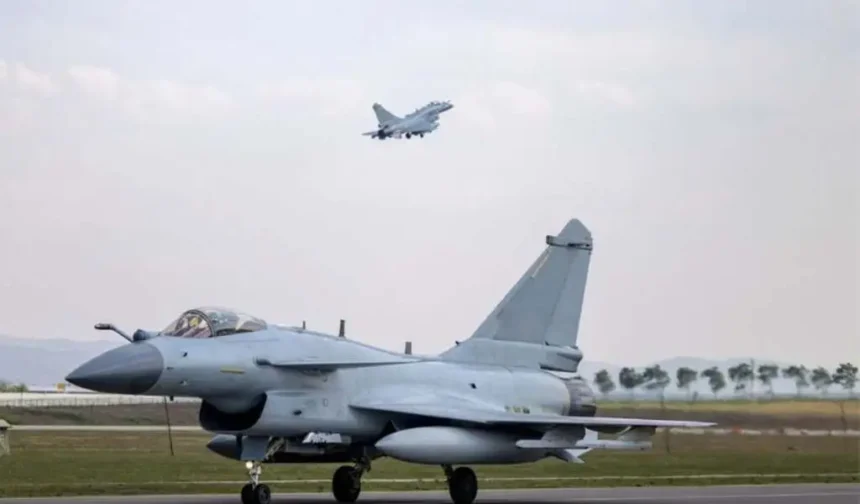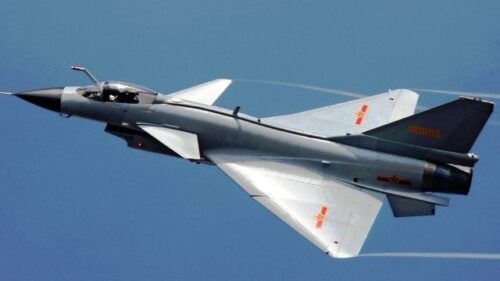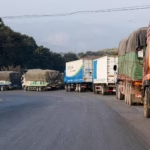No official confirmation has been issued by Indonesia, China, or Russia regarding these intentions, according to the report, which cites sources familiar with the matter. Nevertheless, an announcement may be made during the Indo Defence Expo & Forum, scheduled to take place in Jakarta from June 11–14, 2025.
Indonesia’s ongoing efforts to modernize its air force—amid a complex regional security landscape and economic constraints—are reflected in its potential acquisitions.
These actions suggest a need to balance cost, capability, and geopolitical alignment in a region marked by escalating tensions and rapid military advancements, though the rationale remains unclear.
The modernization of Indonesia’s air force has been a multifaceted and often convoluted process, influenced by a mix of strategic imperatives, fiscal limitations, and geopolitical pressures.
The Indonesian National Armed Forces Air Force (TNI-AU) maintains a fleet that is both diverse and ageing. It includes American F-16s, Russian Su-27s and Su-30s, and British Hawk 200s.
Although these aircraft remain operational, they no longer meet the demands of modern aerial warfare, particularly as regional powers like China, Australia, and Singapore are upgrading to advanced platforms such as the J-20, F-35, and Rafale. Indonesia has explored various global suppliers over the past decade to bridge this gap.
The quest for new fighters began in earnest around 2015 when Indonesia expressed interest in Russia’s Su-35, a 4++ generation multirole fighter known for its advanced radar systems and supermaneuverability.
Cancelled Su-35 Deal Highlights U.S. Pressure and Sanctions
A contract for 11 Su-35s, valued at around $1.14 billion, was announced in 2017. The payment was to be partially offset by Indonesian commodities such as palm oil and coffee.
However, the deal faced significant challenges, primarily the threat of U.S. sanctions under the Countering America’s Adversaries Through Sanctions Act (CAATSA). Jakarta officially cancelled the deal in 2021 after pressure from the Trump administration, citing potential sanctions, according to a 2020 Bloomberg report.
While Indonesian officials pointed to budgetary constraints, analysts argue U.S. diplomatic pressure played a major role. One expert noted, “If Indonesia purchases French or American aircraft in the future, it will serve as definitive evidence that they yielded to U.S. pressure.”
Simultaneously, Indonesia explored other options. In 2016, it partnered with South Korea on the KAI KF-21 Boramae program—a 4.5-generation fighter offering advanced avionics and some stealth features at a lower cost than fifth-generation aircraft like the F-35.
The goal was to acquire up to 50 aircraft, with Indonesia contributing both technical assistance and financial support. However, due to financial challenges, Indonesia’s commitment waned, raising concerns about the program’s viability for Jakarta, as reported by AeroTime.
Despite these hurdles, the KF-21 remains a potential cornerstone of Indonesia’s future air force, given its radar systems and multirole design that align with the country’s defence needs.
In 2022, Indonesia signed a significant $8.1 billion contract for 42 Dassault Rafale fighters, signalling a pivot towards France. The Rafale, also a 4.5-generation fighter, represents a major upgrade with its advanced avionics, weaponry, and proven combat track record.
This deal, one of the largest in Indonesia’s defence history, was seen as a strategic partnership with Western allies, particularly in light of U.S. sanctions on Russian military equipment.
However, the high cost of the Rafale and the logistical complexities of integrating a new platform have sparked domestic criticism, with some lawmakers questioning whether the investment aligns with Indonesia’s broader defence priorities.
In recent years, Indonesia has also been linked with Turkey’s TAI TF-X, also known as KAAN—a fifth-generation fighter still in development. Although no formal agreement has been signed, discussions suggest Indonesia’s interest in cutting-edge technology and maintaining diversified defence partnerships.
The KAAN’s stealth features and advanced sensors make it an ambitious project, but its uncertain timeline and high costs make it a long-term option rather than an immediate solution.
China’s J-10: A Surprising New Contender in Indonesia’s Procurement Plans
A new and unexpected element in Indonesia’s procurement strategy has emerged with reported interest in China’s J-10 fighters, as outlined by Alert 5. Developed by Chengdu Aerospace Corporation, the J-10 is a single-engine multirole fighter designed to compete with Western aircraft like the Eurofighter Typhoon and F-16.
The J-10 has not previously featured prominently in Indonesia’s considerations, making this a surprising development that warrants further scrutiny.
Indonesia’s pursuit of new fighter jets is driven by a combination of economic, strategic, and operational considerations. While the current fleet remains serviceable, it is increasingly outdated in a region where air superiority is vital.
The importance of a capable air force is underscored by ongoing tensions in the South China Sea, a flashpoint involving China, the Philippines, Vietnam, and others.
China now operates stealthy J-20s, Australia fields F-35s, and Singapore has procured Rafales. This regional arms build-up places pressure on Indonesia to modernize to maintain its credibility as a regional power and protect its vast archipelago of over 17,000 islands and key maritime routes.
Financially, Indonesia faces significant constraints. With a 2024 defence budget of around $9 billion, the country must carefully balance military modernisation with pressing needs in infrastructure and humanitarian programs.
The high cost of platforms like the Rafale—estimated at around $200 million per unit—has led Indonesia to explore more affordable alternatives, including used aircraft. From a geopolitical standpoint, Indonesia’s non-aligned foreign policy encourages diversification of defence partners to avoid overdependence on any one supplier.
To preserve strategic autonomy while managing pressures from major powers such as the U.S. and China, Indonesia has engaged with Russia, France, South Korea, Turkey, and now potentially China.
The reported acquisition of 42 used J-10s represents a significant departure from recent trends favouring Western and Russian platforms. This shift may be driven by several factors, but caution is advised due to the lack of official confirmation. Cost is likely a key motivator.
Used J-10s—possibly sourced from China’s People’s Liberation Army Air Force (PLAAF)—would cost significantly less than new Rafales or Su-35s. Pakistan’s purchase of 25 new J-10C fighters was estimated at $1.3 billion, or about $50 million per unit. Used aircraft could be available for $20–30 million each, making them attractive for a cost-conscious Indonesia.
The J-10’s suitability for Indonesia may also lie in its versatility. It is capable of air-to-air combat, ground attack, and maritime strike missions, matching Indonesia’s need for flexible platforms to patrol its vast maritime domain.
Its single-engine design offers lower operating costs than twin-engine jets like the Su-35 or Rafale, critical for a nation with limited maintenance infrastructure. Additionally, China’s willingness to offer favourable financing or technology transfers could make the deal even more appealing, as seen in its agreements with Pakistan.
Still, the credibility of Alert 5’s report is uncertain. The phrase “sources familiar with the matter” often appears in speculative defence reporting.
One theory is that the report reflects Chinese efforts to raise the J-10’s profile in the global market. China has aggressively promoted its defence exports in recent years, particularly to countries like Pakistan.
The J-10’s Features and Potential Fit with Indonesia’s Needs
The timing, just ahead of the Indo Defence Expo—may indicate a strategic leak by Chinese officials to generate buzz or pressure Indonesia into a deal. Alternatively, the report could simply be speculative, stemming from Indonesia’s continued search for affordable alternatives rather than any firm commitment.
Recent events may have also influenced Indonesia’s interest. The J-10C gained attention during Pakistan-India tensions, particularly in 2019, when Pakistani J-10Cs reportedly performed well in air skirmishes. This could enhance the aircraft’s appeal as a proven yet affordable platform compared to Western options.
That said, buying used aircraft raises concerns about their condition, remaining service life, and compatibility with Indonesia’s largely Western and Russian-based systems.
The J-10, often called the “Vigorous Dragon,” is a key part of China’s modern air force. Designed as a bridge between third- and fourth-generation fighters, it first flew in 1998 and entered PLAAF service in 2004. It has since undergone multiple upgrades to avionics, engines, and weapon systems.
The J-10A features canards and a delta-wing configuration for high manoeuvrability. Powered by a single Russian AL-31F engine (also used in the Su-27),
















